Abstract
This study examined whether differences in survival for endometrial cancer attributed to race are primarily associated with socioeconomic status, comorbid illnesses, molecular genetic alterations, and other disease-related characteristics identified as poor prognostic factors. One hundred fifty-two surgically staged patients with endometrial cancer (37 African-American and 115 European-American women) treated from 1990 to 1994 were analyzed for differences in demographics, disease-related characteristics, and survival. Survival was poorer for African-American women than for European-American women. African-American women had lower socioeconomic status and a higher prevalence of poor prognostic factors. Surgical stage, positive peritoneal cytology, angiolymphatic invasion, cervical stromal involvement, and a history of other malignancies were similar between the two groups. The most important predictors of survival were age at diagnosis, surgical stage, myometrial invasion, positive peritoneal cytology, cervical stromal involvement, tumor grade, aneuploidy, histology, S-phase fraction, number of poor prognostic factors, and race. Racial differences in survival were not explained by socioeconomic status, comorbid illnesses, or estrogen use. When incorporating the number of poor prognostic factors in a survival model with race and surgical stage, race ceased to be of significant prognostic value. In an analysis restricted to women with poor prognostic factors, this phenomena also occurred after adjusting for the number of poor prognostic factors. These findings suggest that the cumulative number of poor prognostic factors, not race, is a more important predictor of survival in endometrial cancer.
Full text
PDF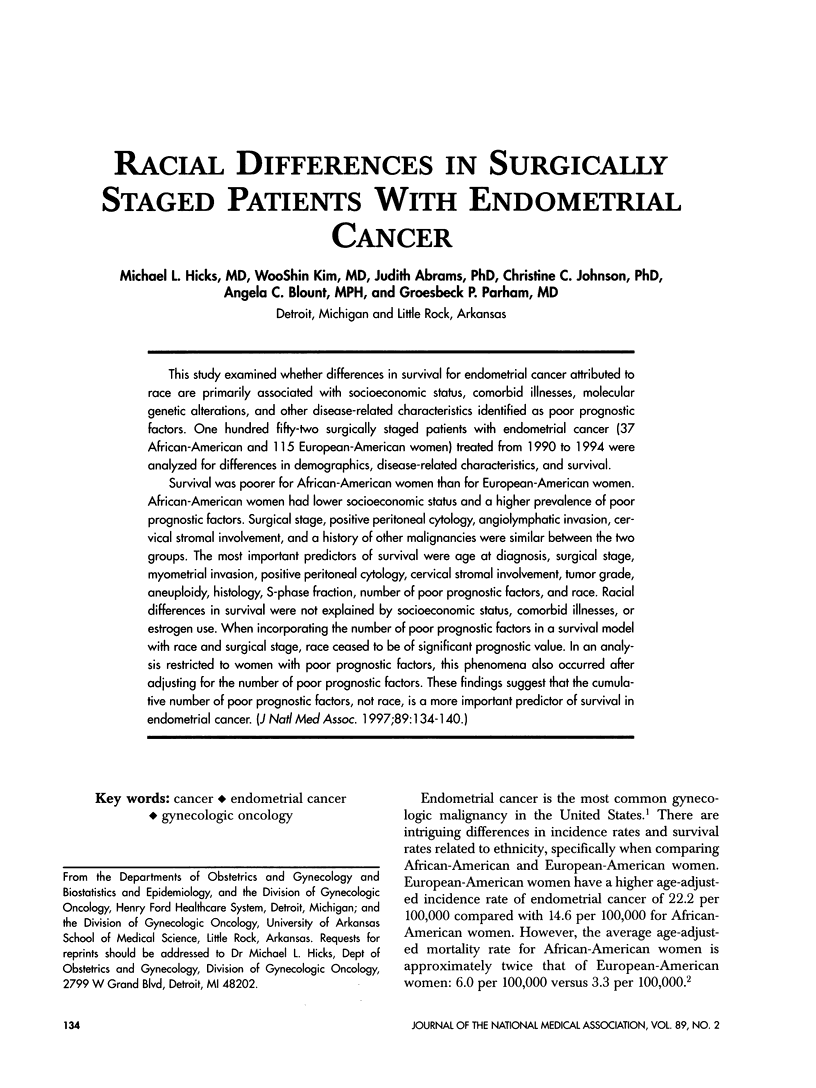
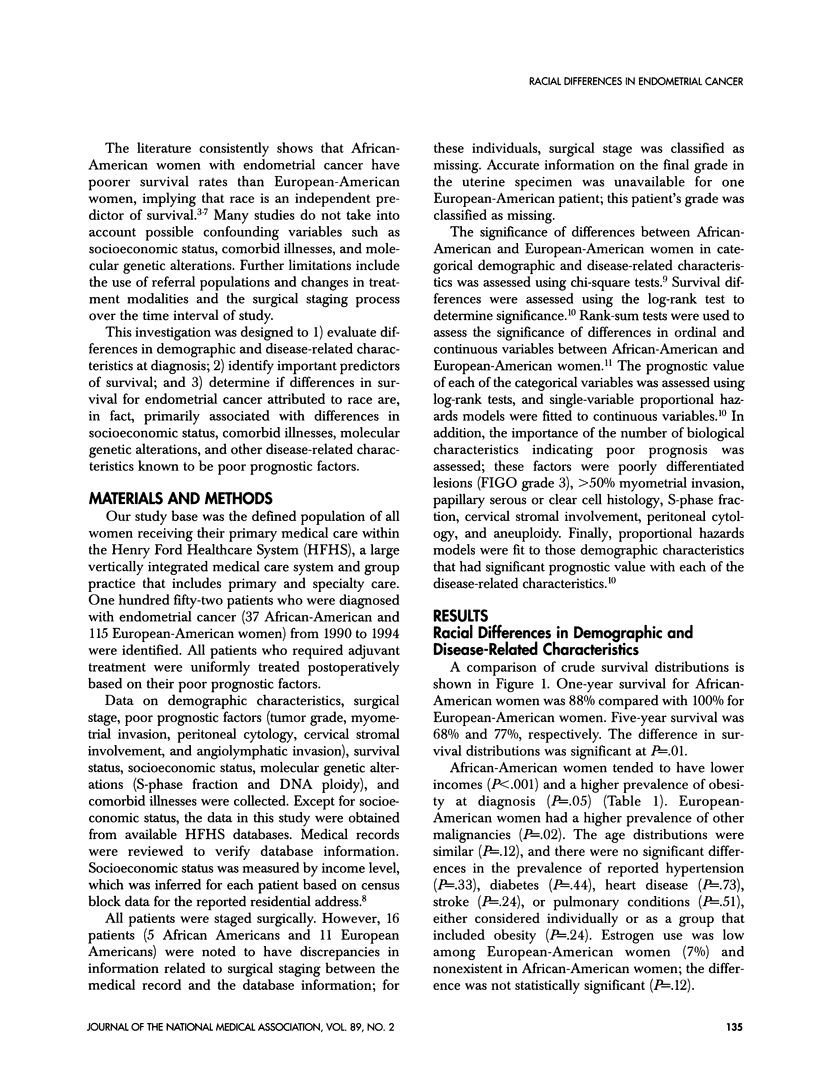
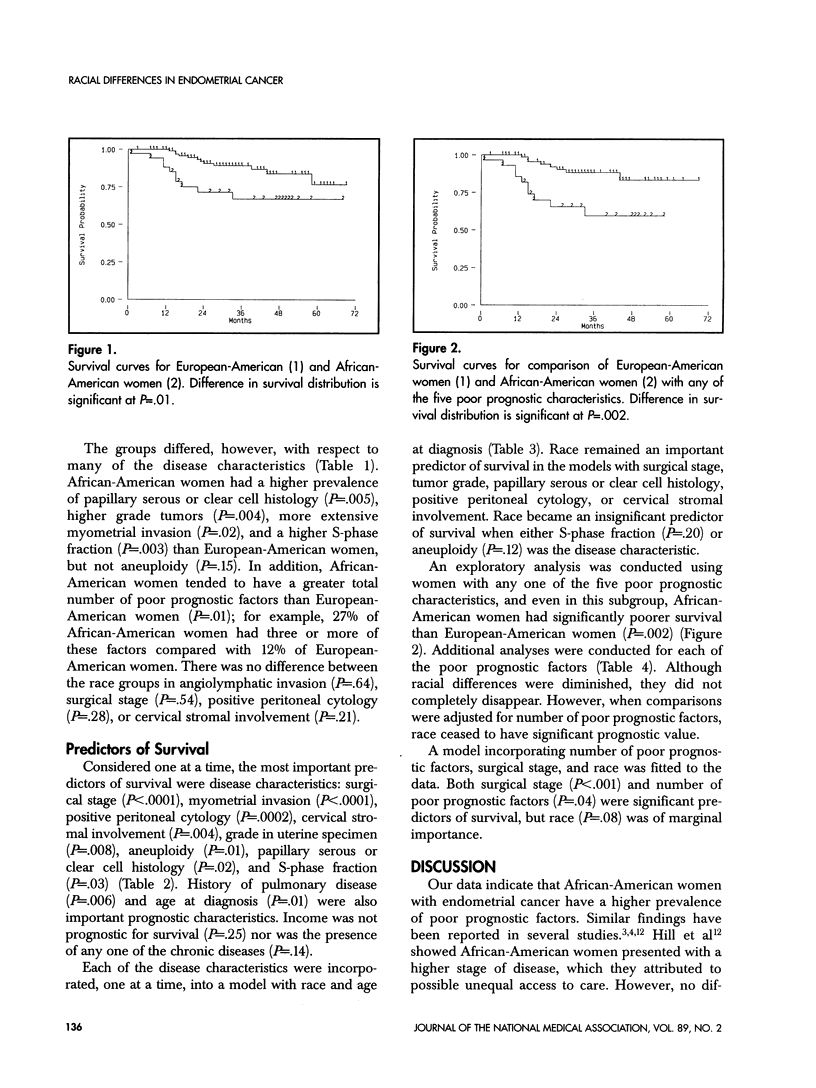
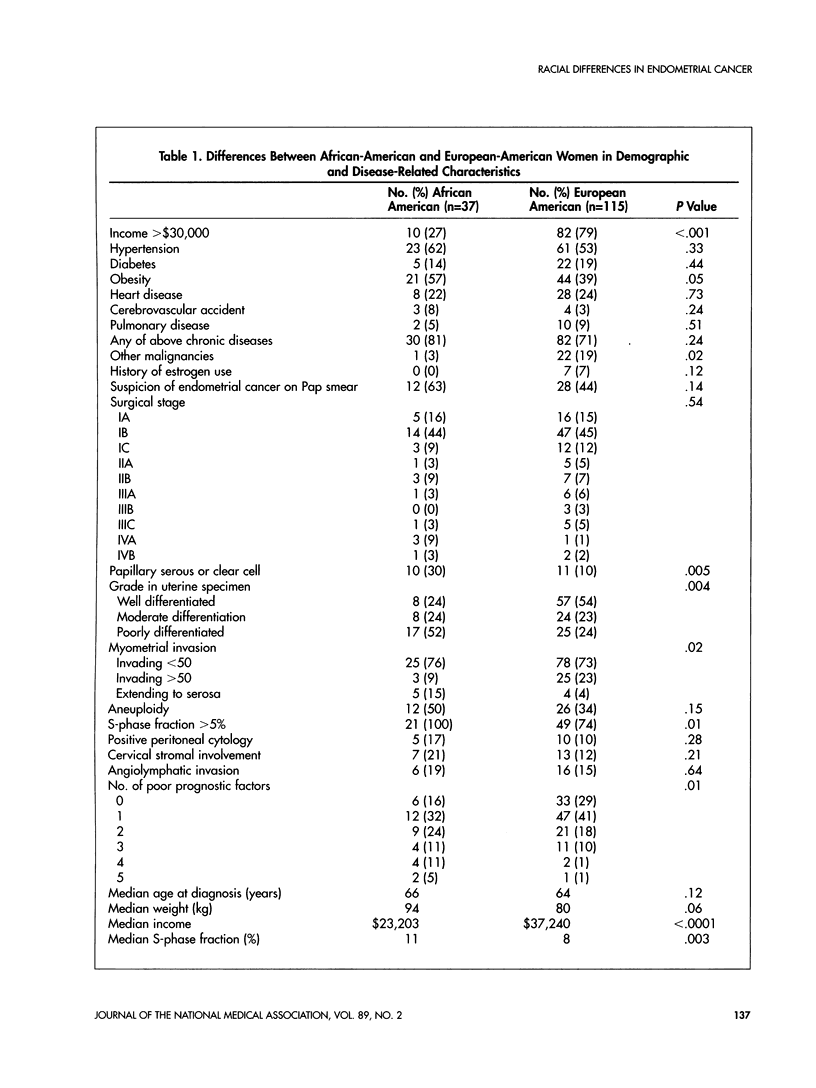
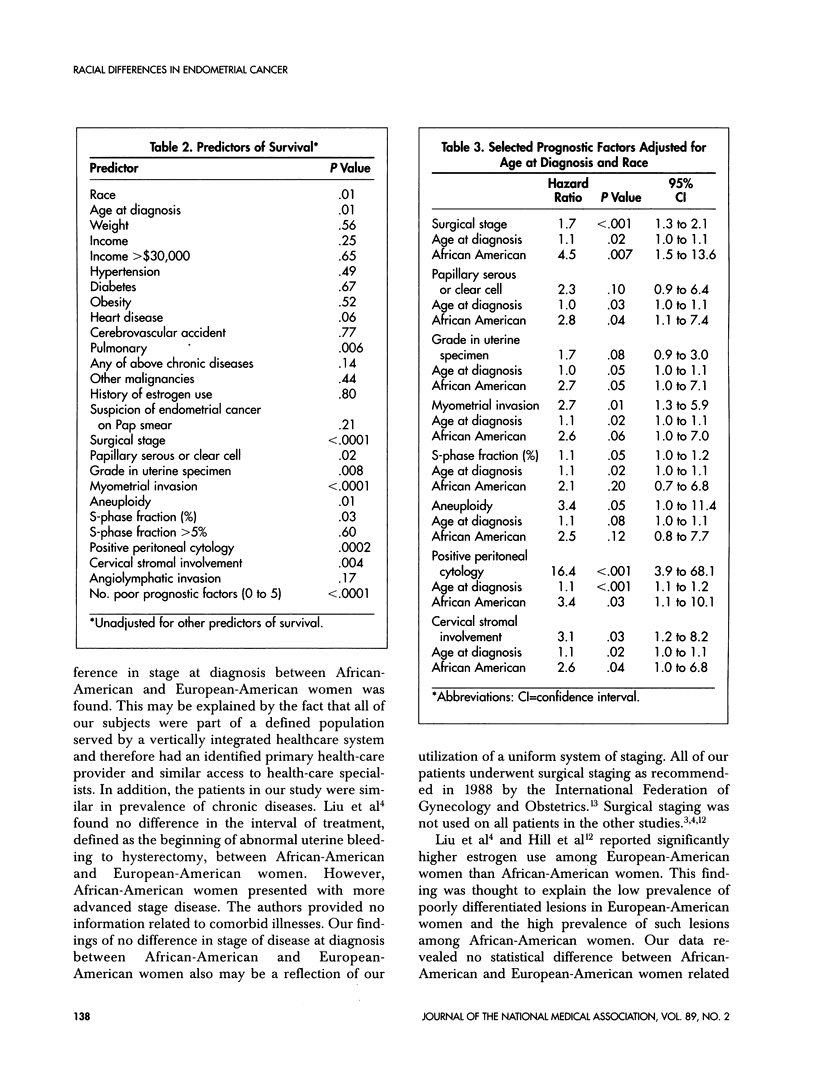
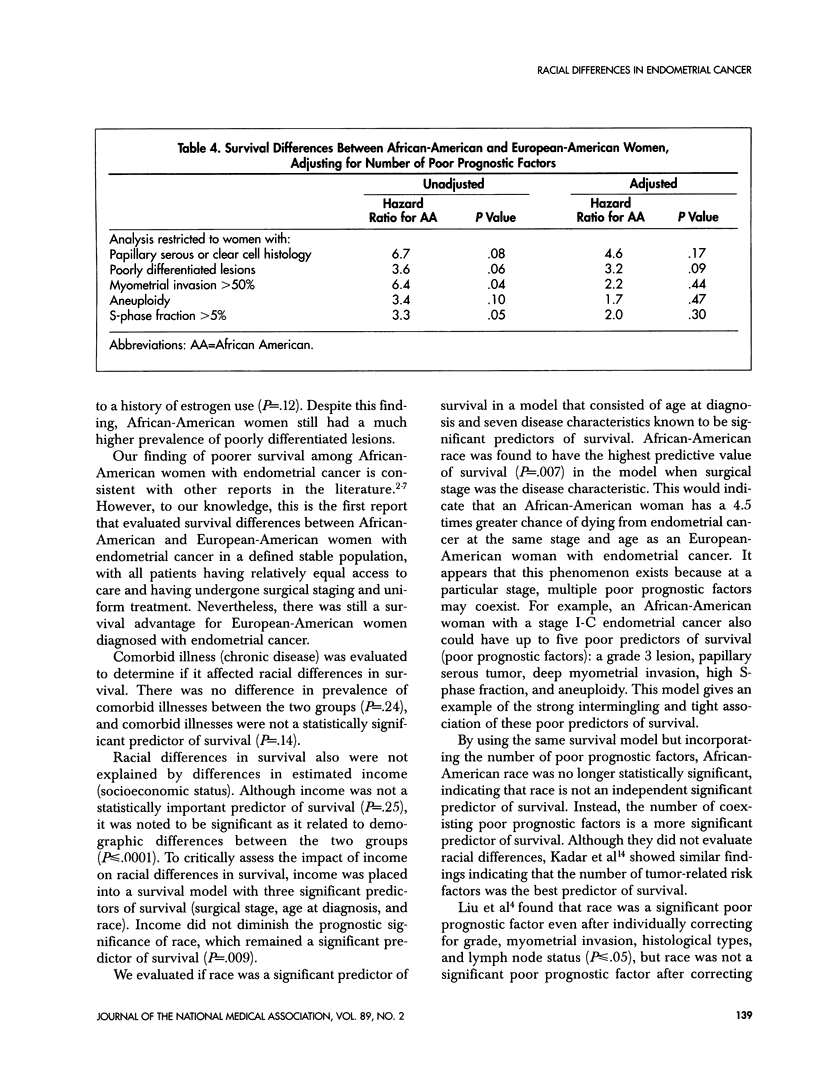
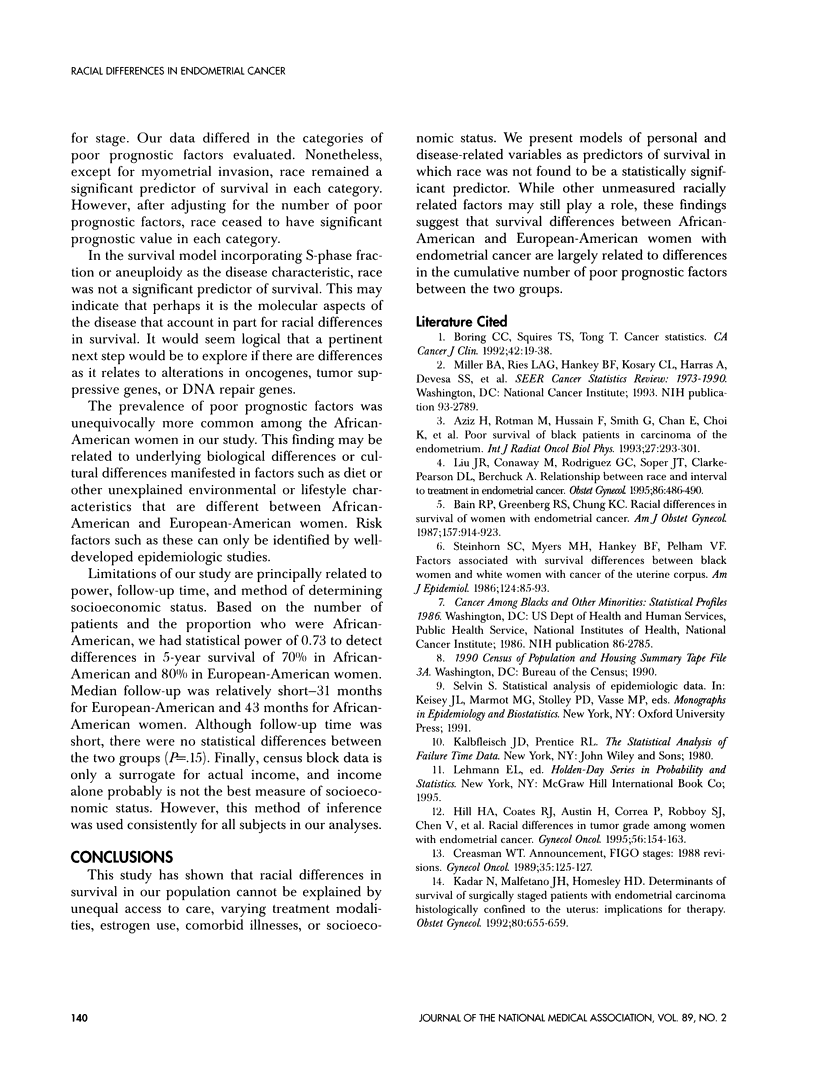
Selected References
These references are in PubMed. This may not be the complete list of references from this article.
- Aziz H., Rotman M., Hussain F., Smith G., Chan E., Choi K., Sohn C., Halpern J., Schwartz D., Aral I. Poor survival of black patients in carcinoma of the endometrium. Int J Radiat Oncol Biol Phys. 1993 Sep 30;27(2):293–301. doi: 10.1016/0360-3016(93)90240-v. [DOI] [PubMed] [Google Scholar]
- Bain R. P., Greenberg R. S., Chung K. C. Racial differences in survival of women with endometrial cancer. Am J Obstet Gynecol. 1987 Oct;157(4 Pt 1):914–923. doi: 10.1016/s0002-9378(87)80089-3. [DOI] [PubMed] [Google Scholar]
- Boring C. C., Squires T. S., Tong T. Cancer statistics, 1992. CA Cancer J Clin. 1992 Jan-Feb;42(1):19–38. doi: 10.3322/canjclin.42.1.19. [DOI] [PubMed] [Google Scholar]
- Hill H. A., Coates R. J., Austin H., Correa P., Robboy S. J., Chen V., Click L. A., Barrett R. J., 2nd, Boyce J. G., Kotz H. L. Racial differences in tumor grade among women with endometrial cancer. Gynecol Oncol. 1995 Feb;56(2):154–163. doi: 10.1006/gyno.1995.1024. [DOI] [PubMed] [Google Scholar]
- Kadar N., Malfetano J. H., Homesley H. D. Determinants of survival of surgically staged patients with endometrial carcinoma histologically confined to the uterus: implications for therapy. Obstet Gynecol. 1992 Oct;80(4):655–659. [PubMed] [Google Scholar]
- Liu J. R., Conaway M., Rodriguez G. C., Soper J. T., Clarke-Pearson D. L., Berchuck A. Relationship between race and interval to treatment in endometrial cancer. Obstet Gynecol. 1995 Oct;86(4 Pt 1):486–490. doi: 10.1016/0029-7844(95)00238-m. [DOI] [PubMed] [Google Scholar]
- Steinhorn S. C., Myers M. H., Hankey B. F., Pelham V. F. Factors associated with survival differences between black women and white women with cancer of the uterine corpus. Am J Epidemiol. 1986 Jul;124(1):85–93. doi: 10.1093/oxfordjournals.aje.a114373. [DOI] [PubMed] [Google Scholar]


